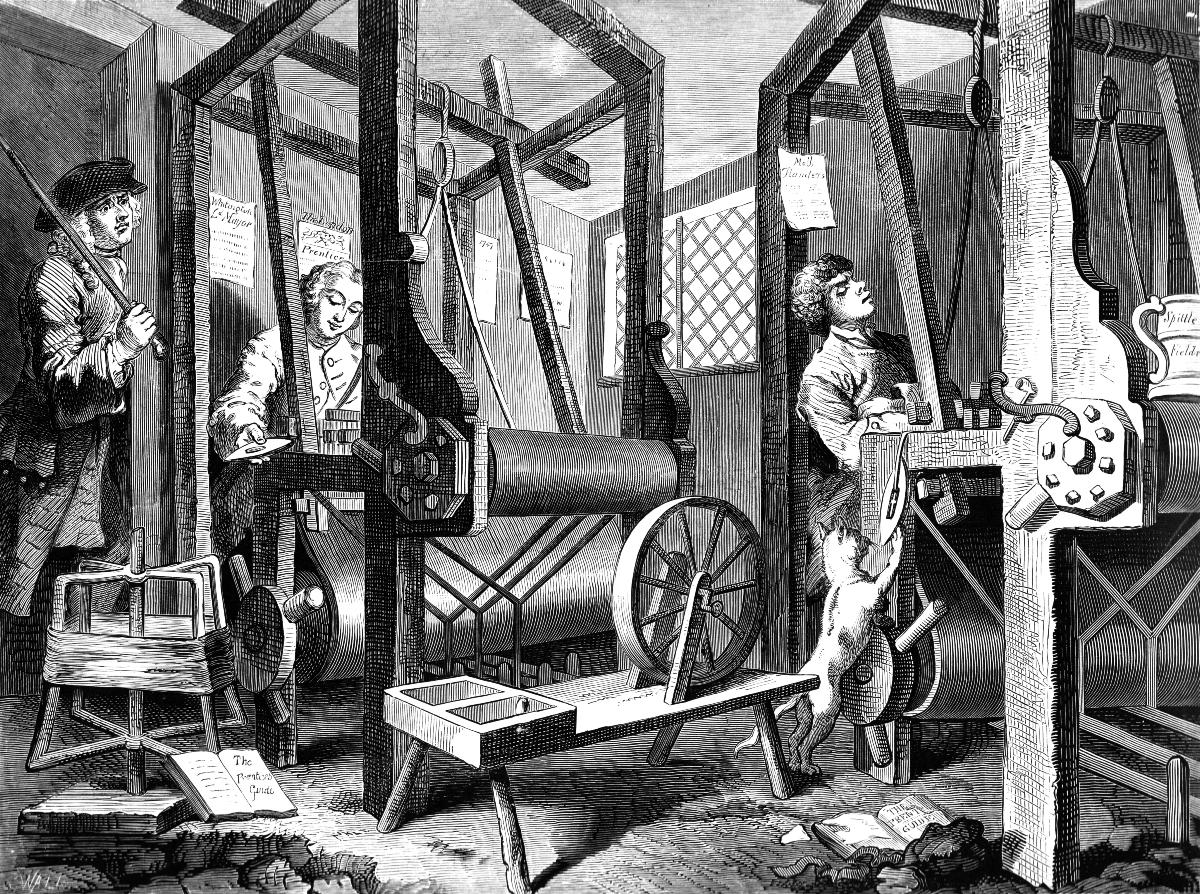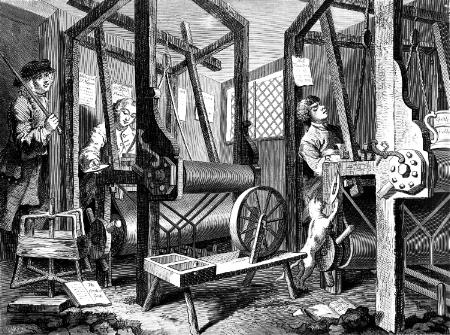
|

|
The amazing web site of Shakespeare's Sonnets. Industry and Idleness. Plate 1. The two Apprentices, by Hogarth.
HAKESPEARE'S
ONNETS
This is part of the web site of Shakespeare's sonnets
PICTURE GALLERY.
William Hogarth 1697 - 1764.
Industry
and Idleness. Plate I. The Two Apprentices.
1747.
| Hogarth
first achieved fame as an artist through his series of moralistic
engravings, commencing with A
Harlot's Progress
in 1731. This was followed by A
Rake's Progress
in 1735, Marriage
ŕ-la-mode
in 1743-5, and Industry
and Idleness in
1747
. Originally the sets of pictures were oil
paintings which
Hogarth subsequently published as engravings. However the
Industry and Idleness series was conceived entirely as a set
of engravings which were not copied from paintings. They were
put on sale for one shilling each, which is equivalent today, (2008),
to about ten pounds sterling (GBP). Evidently Hogarth was trying
to appeal to a wider audience than the upper class wealthy who were his
usual patrons. The Industry and Idleness series is rather crudely moralistic, depicting how industry and virtue are rewarded with worldly success, while idleness, corruption and vice is ultimately punished by the gallows. Despite this rather tedious tale, which is not true to life and simplistically misrepresents the apprenticeship system of the time, the engravings are a superb record of both the lower and upper end of London life of the time. The banqueting scene of Plate 8 and the two final crowd scenes of the Tyburn spectacle and the Lord Mayor's Parade are incomparable and show the satirical Hogarth at his very best. |
||
| In
the
first engraving we are introduced to the two apprentices sitting at
their looms in a workshop. Behind them stands the master with
stick in hand. According to my source this is 'the interior of a
factory in Spitalfields, - one of the most extensive establishments in
that district of the metropolis, and belonging to a worthy citizen of
the name of West. In a large, airy and well-lighted apartment are
several looms, employed in the weaving of that soft and lustrous
texture which constitutes one of the most costly as well as the most
beautiful of our manufactures'. The two apprentices are contrasted in this picture - Frank Goodchild, the honest one, works diligently at his loom. The tale of Dick Whittington, the pauper boy who became Lord Mayor of London, hangs on the wall above him. Meanwhile Tom Idle, the lazy apprentice, sleeps off the effects of a flagon or two of ale, while a cat plays with the shuttle of the loom. Moll Flanders, probably a scurrilous ballad based on Defoe's eponymous novel, hangs above his head, while the neglected and torn Prentises Guide lies on the ground. Probably Hogarth drew the setting from life and the engraving gives an interesting picture of a weaving workshop of the period. |
||


Shakespeare's Sonnets:
| Start here with the first sonnet |
|
Sonnets 1 - 50 | Some links to other sites | ||
|
|
Sonnets 51 - 100 | ||||
|
|
|
Sonnets 101 - 154 | For
a global search use all the sonnets as
plain text 1-154 or use the first line index. |
If
you have enjoyed this web site, please
visit its companion - Pushkin's Poems |
|
| Map of the site | |||||
| Views of London as it was in 1616. |
London Bridge As it was in Shakespeare's day, circa 1600. |
To
search for a line or phrase in the sonnets
go to the sonnets as plain text and use the browser text search engine. |
| Views of London as it was in 1616. |
London Bridge As it was in Shakespeare's day, circa 1600. |
To search for a line or phrase in the sonnets
go to the Sonnets as plain text and use the browser text search engine. |
| Sonnets 1 - 50 | Back to home page | |
| Sonnets 51 - 100 | If
you have enjoyed this web site, please
visit its companion - Pushkin's Poems |
|
| Sonnets 101 - 154 | If you wish to comment on this site please refer to details on the home page. | |
| Copyright Šof this site belongs to Oxquarry Books Ltd |

Copyright Šof this site belongs to Oxquarry Books Ltd